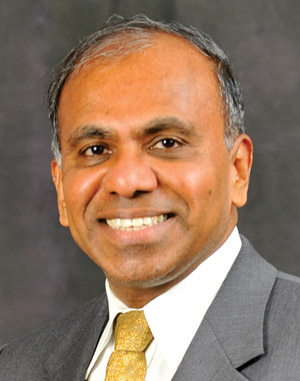NSF invites “CREATIV” research proposals
DOI: 10.1063/PT.3.1395
Looking to stimulate innovative interdisciplinary research proposals, NSF officials announced in November a new $24 million program that will provide grants to projects that can attract interest from at least two agency program directors. Proposals submitted under the Creative Research Awards for Transformative Interdisciplinary Ventures (CREATIV) program will be reviewed internally, cutting the time to approval to three months or less—about half the time required for a standard investigator-initiated grant.
The CREATIV program “will tap productive interdisciplinary cross sections while answering calls from the [scientific] community to facilitate the funding of potentially transformative and high-risk, high-reward research,” said NSF director Subra Suresh. The new grant mechanism’s solicitation and review processes will ensure that “no proposals fall silently between disciplinary silos,” he said, and added that CREATIV is expected to generate proposals “that might be discouraged by perceived bias against interdisciplinary work, or that might be discouraged by adherence to bureaucratic practices.”
Grants of up to $800 000 over five years will be awarded for proposals that receive endorsement by two NSF directorates, and awards of up to $1 million over five years will be made for those getting the nod from three or more directorates, said Thomas Russell, of NSF’s Office of Integrative Activities. Applicants must receive approval from the heads of at least two directorates prior to submitting their proposals, which must be received by 15 June 2012. The agency isn’t soliciting, nor is it suggesting, particular topics or fields for CREATIV proposals. Richard Behnke, cochair with Russell of the NSF working group that developed the CREATIV program, said the research’s “potentially transformational” requirement could include challenging conventional wisdom. As with all NSF grants, the proposals also must address how the research will produce societal benefits, a requirement that has come to be known as “broader impacts.”
The CREATIV project is the first under an NSF umbrella program known as Integrated NSF Support Promoting Interdisciplinary Research and Education. Other INSPIRE initiatives will be announced in the coming months, the three officials said, though CREATIV is the only one due for launch this fiscal year. Suresh said that NSF expects INSPIRE’s budget to grow to $120 million—about 2% of the agency’s total grant portfolio—by 2016.
The internal review for CREATIV will allow interdisciplinary research proposals to bypass the inherently conservative disciplinary-specific external review process, said the American Mathematical Society’s Sam Rankin, who chairs the Coalition for National Science Funding lobbying group. Many mathematicians are involved in interdisciplinary research, he says; Suncica Canic, professor of mathematics at the University of Houston, for example, has developed computing models to help guide the search for improved coatings for stents used in the treatment of coronary artery disease.
Other existing interdisciplinary mechanisms at NSF include grant solicitations in such topical areas as cyber-enabled discovery and innovation, water sustainability and climate, and mathematical geosciences. NSF-funded centers in science and technology, materials research and engineering, and science of learning bring together interdisciplinary research teams from academic institutions. The agency also supports interdisciplinary training programs such as the Integrative Graduate Education and Research Traineeship, Research Experiences for Undergraduates, and Interdisciplinary Training for Undergraduates in Biological and Mathematical Sciences.
Emphasizing that CREATIV is a pilot project, Russell said NSF officials hope to find out whether anecdotal evidence of reviewers’ bias against interdisciplinary research is real or perceived. “Part of the pilot will be to assess what sort of proposals come in, how out of the box are they, how strong are they, and [whether] this is something that we should continue to pursue,” he said. That evaluation will determine whether the program will be extended into fiscal year 2013.

Subra Suresh, NSF director
NSF

More about the Authors
David Kramer. dkramer@aip.org
